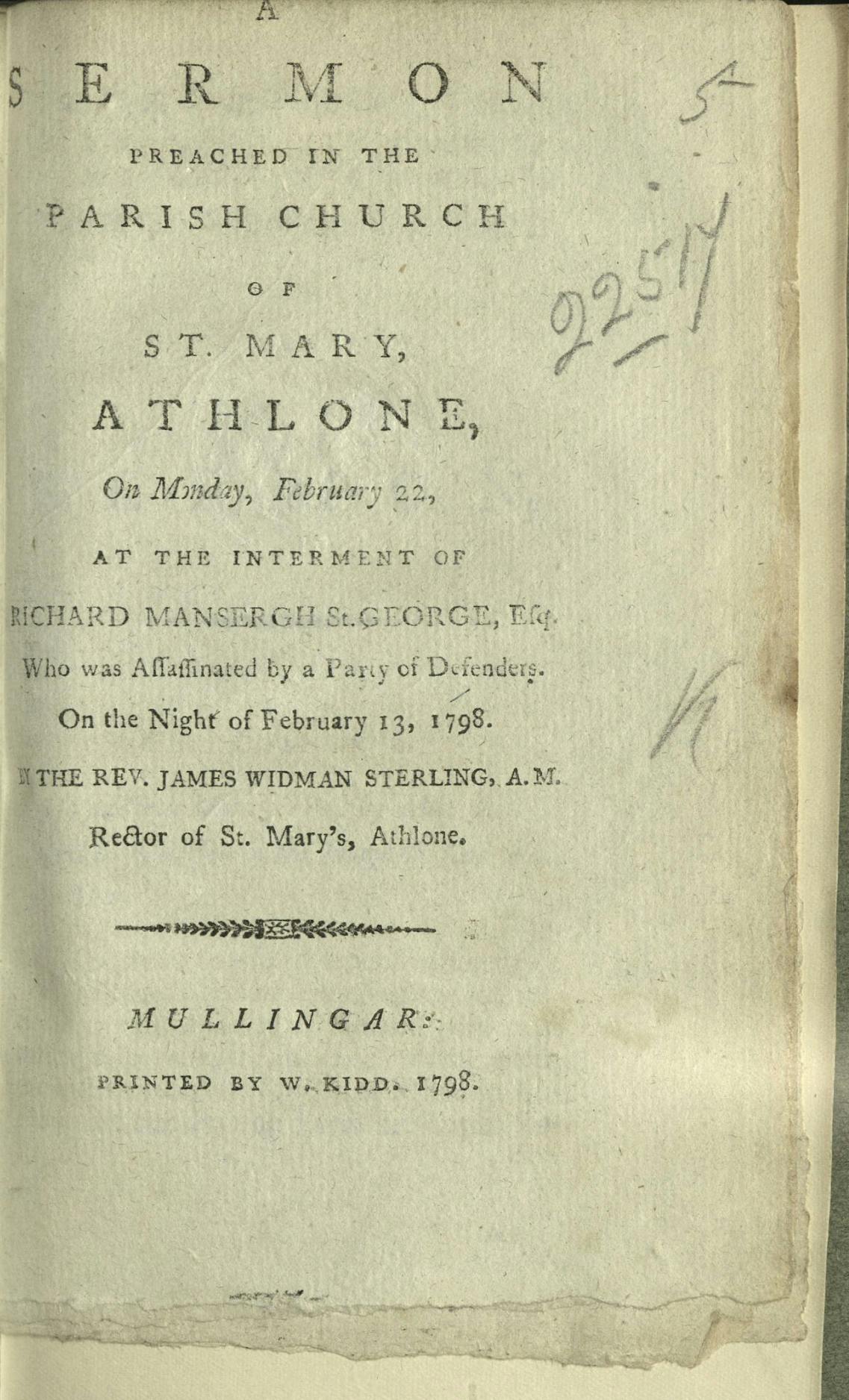
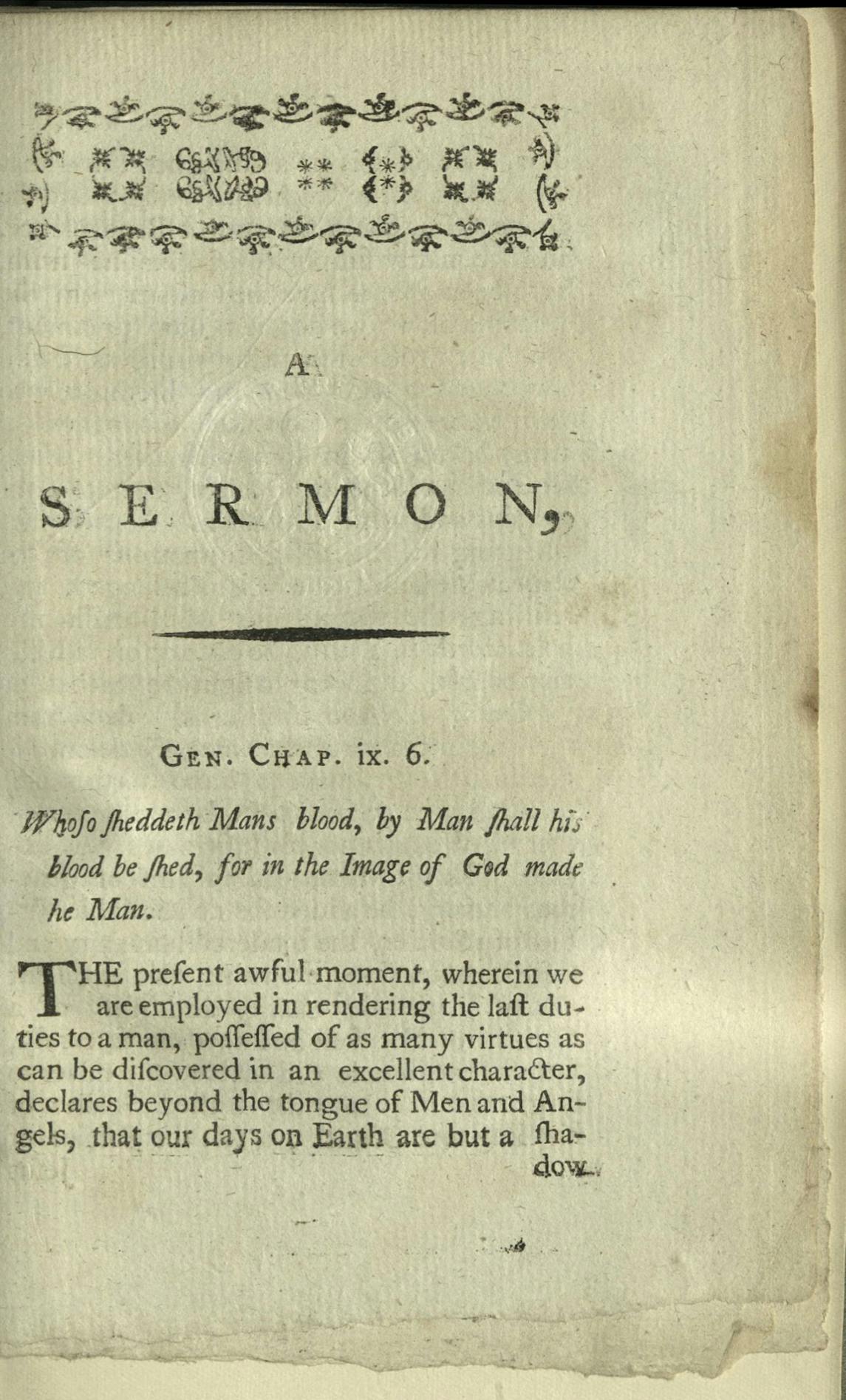
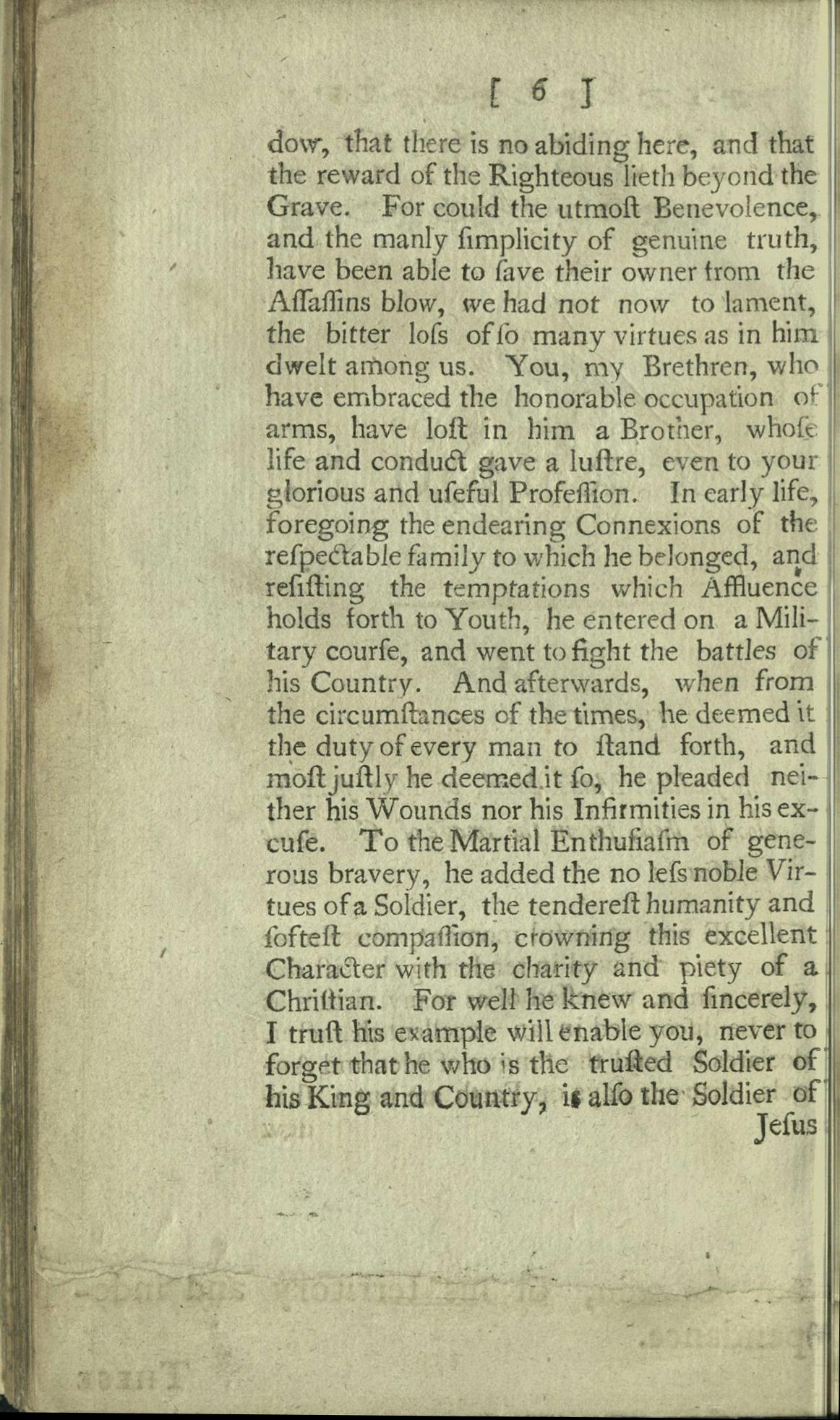
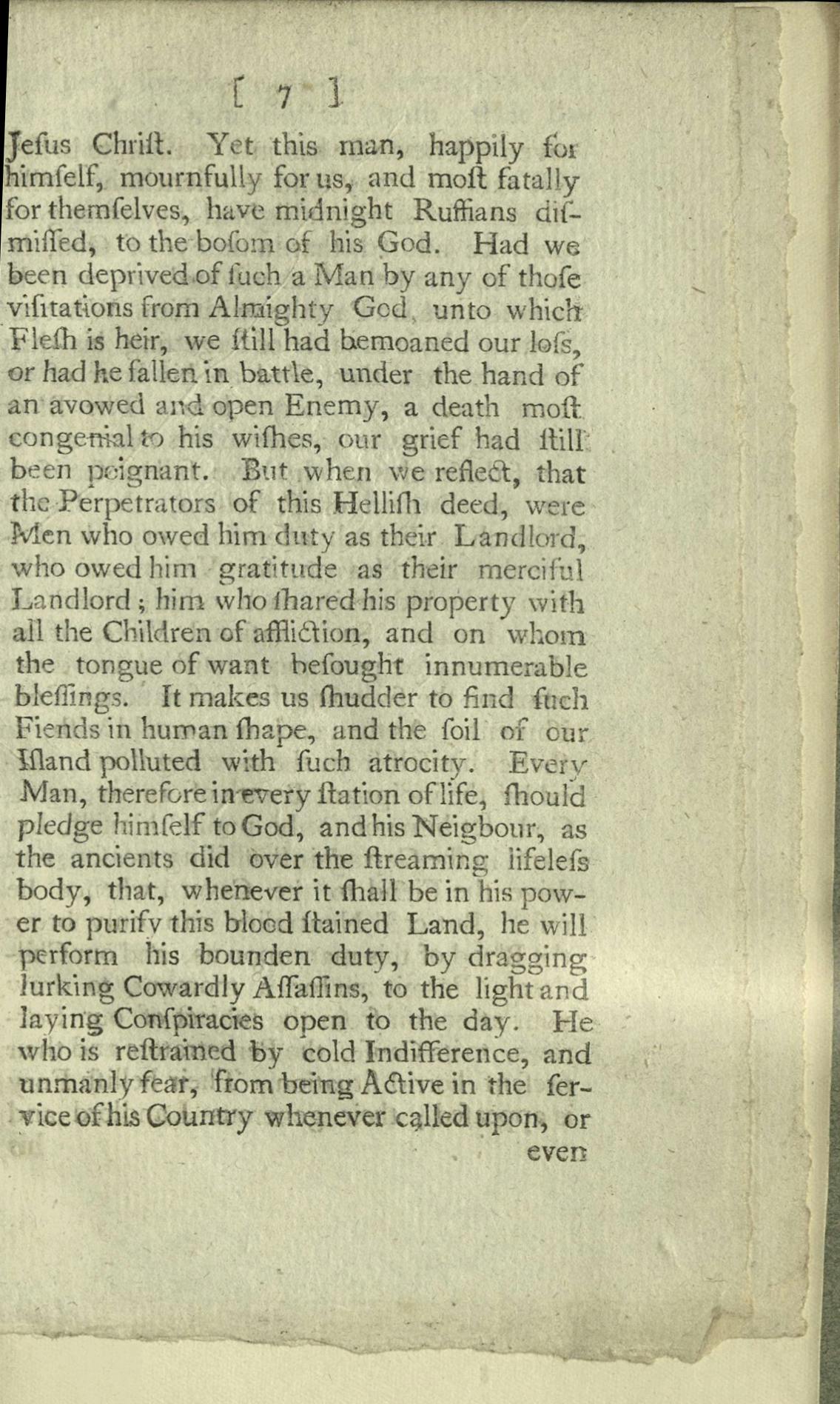
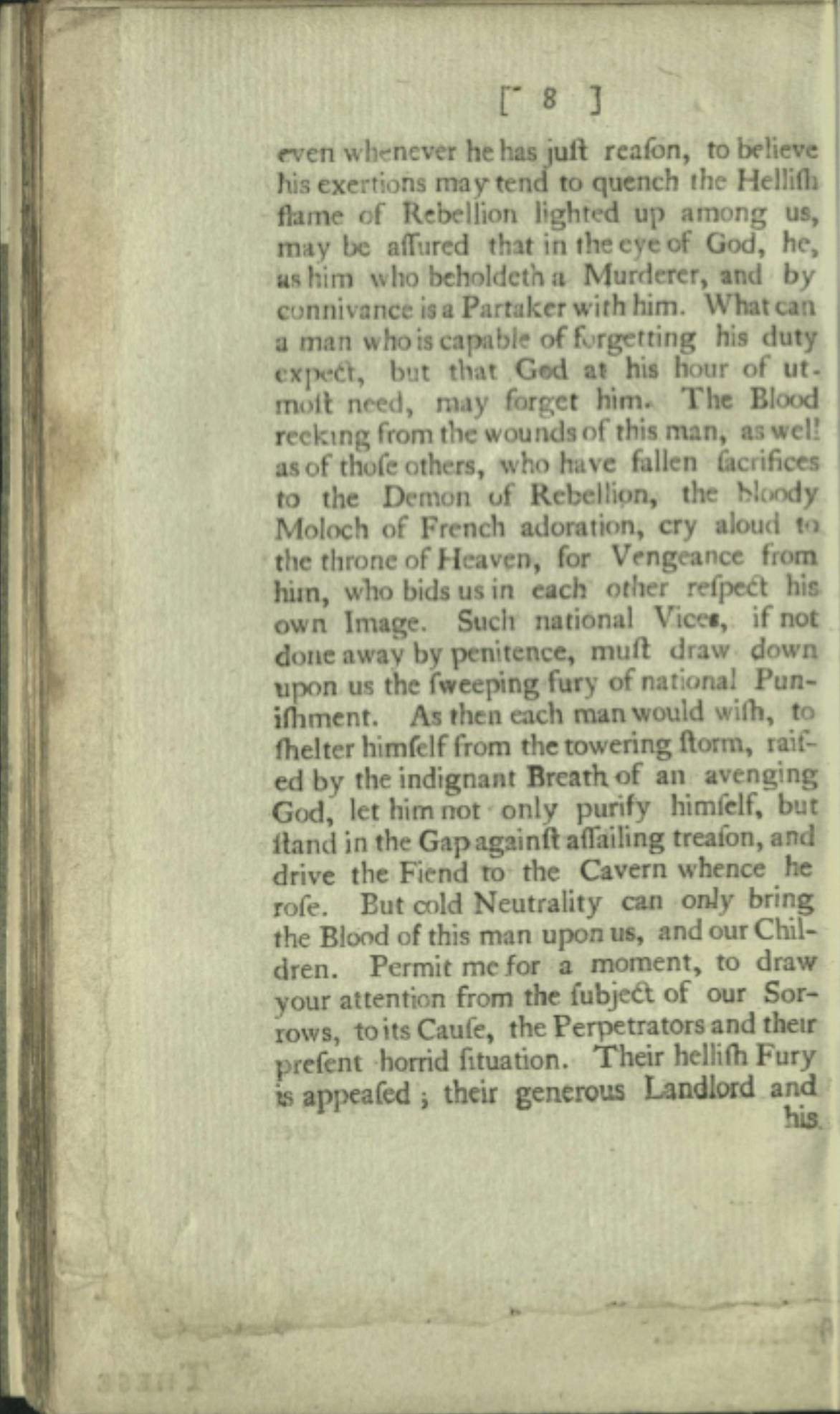
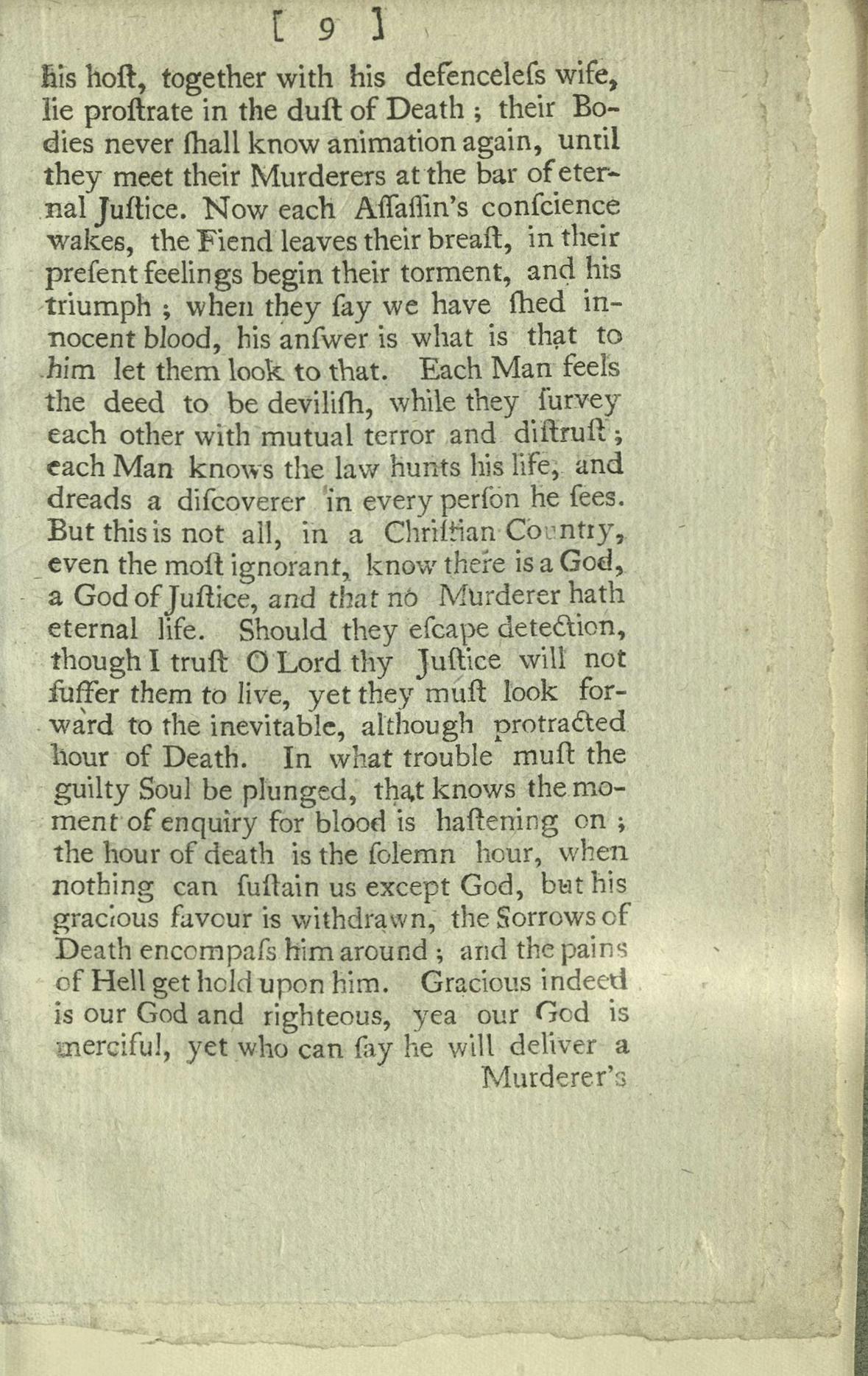
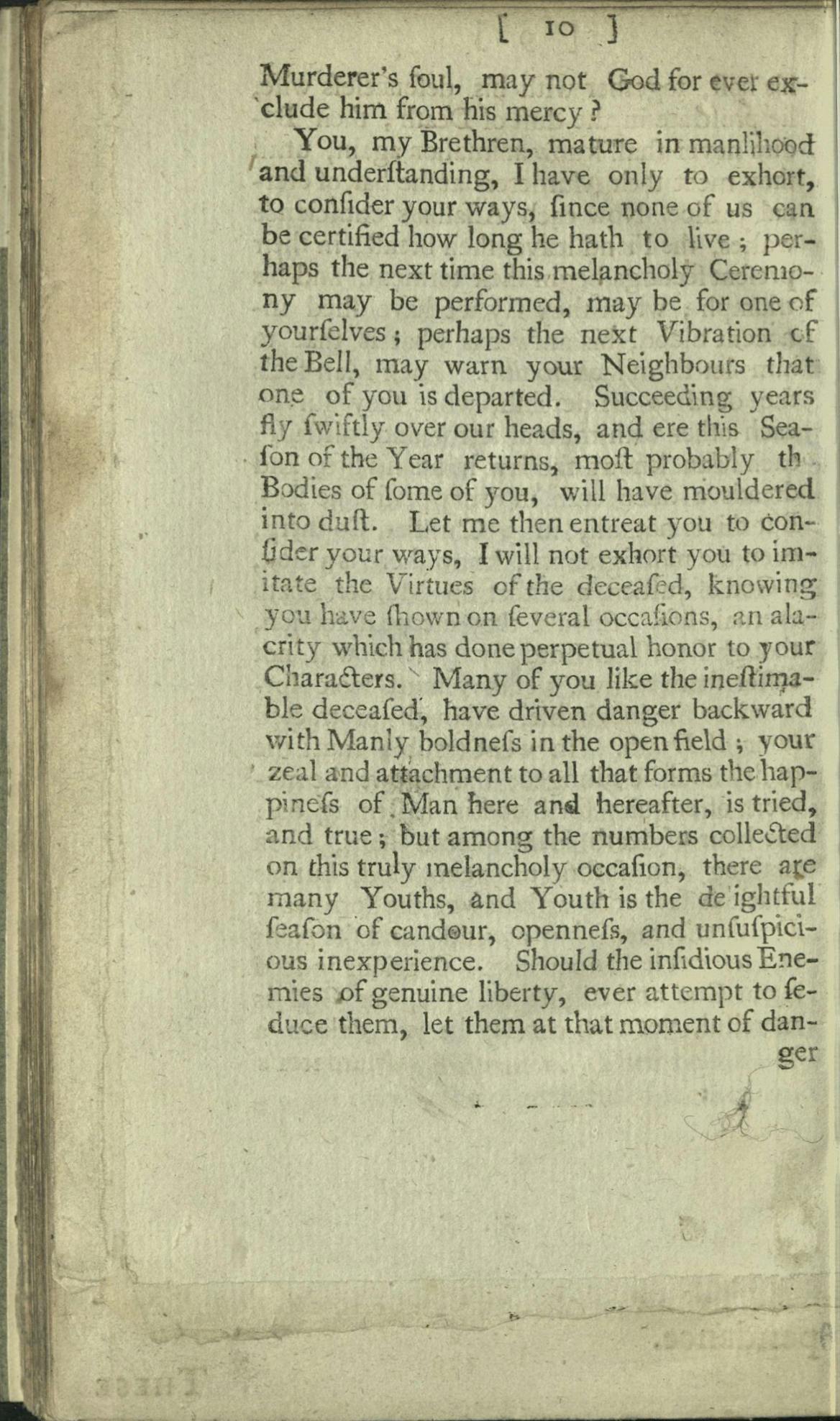
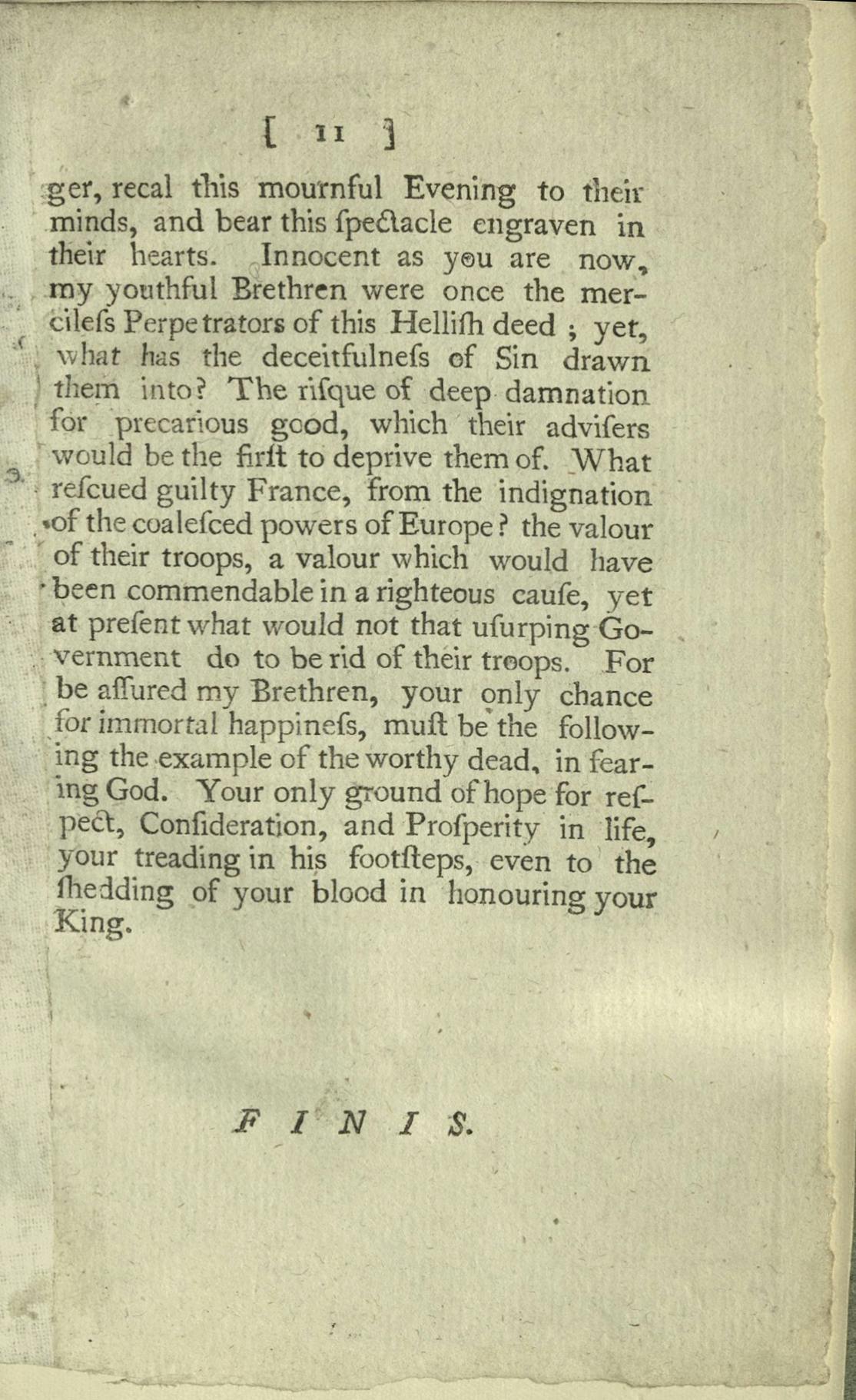
Funeral Sermon
Reverend James Widman Sterling delivered this sermon at Richard Mansergh St. George’s funeral which took place on February 22, 1798, at St. Mary’s Church (Church of Ireland) in Athlone. Reverend Sterling’s sermon, which was later printed, reflected on the violence of the Revolutionary era. He argued that St. George’s loyalty was his greatest virtue. Reverend Sterling called St. George “a trusted soldier of his King and Country” and ridiculed the “Demon of Rebellion” in Ireland. He reminded those who mourned that they could only find happiness if they followed St. George's example and remained loyal to the King—even if it meant death. Richard Mansergh St. George’s family and friends laid him to rest amidst the violent tensions that gripped Ireland. Fellow Church of Ireland landlords worried about their safety while rural tenants continued to stockpile weapons for the planned revolt of the United Irishmen. Landlords hoped the British Army and the Yeomanry would protect them.
Note: The printer of the funeral sermon put the wrong date of St. George’s death on the first page. St. George was killed on February 9, 1798, not February 13.
“A Sermon Preached in the Parish Church of St. Mary, Athlone”
1798
Printed by W. Kidd
Paper, Ink
Courtesy of Manchester Central Library
Funeral Sermon
Reverend James Widman Sterling delivered this sermon at Richard Mansergh St. George’s funeral which took place on February 22, 1798, at St. Mary’s Church (Church of Ireland) in Athlone. Reverend Sterling’s sermon, which was later printed, reflected on the violence of the Revolutionary era. He argued that St. George’s loyalty was his greatest virtue. Reverend Sterling called St. George “a trusted soldier of his King and Country” and ridiculed the “Demon of Rebellion” in Ireland. He reminded those who mourned that they could only find happiness if they followed St. George's example and remained loyal to the King—even if it meant death. Richard Mansergh St. George’s family and friends laid him to rest amidst the violent tensions that gripped Ireland. Fellow Church of Ireland landlords worried about their safety while rural tenants continued to stockpile weapons for the planned revolt of the United Irishmen. Landlords hoped the British Army and the Yeomanry would protect them.
Note: The printer of the funeral sermon put the wrong date of St. George’s death on the first page. St. George was killed on February 9, 1798, not February 13.
“A Sermon Preached in the Parish Church of St. Mary, Athlone”
1798
Printed by W. Kidd
Paper, Ink
Courtesy of Manchester Central Library
Funeral Sermon
Reverend James Widman Sterling delivered this sermon at Richard Mansergh St. George’s funeral which took place on February 22, 1798, at St. Mary’s Church (Church of Ireland) in Athlone. Reverend Sterling’s sermon, which was later printed, reflected on the violence of the Revolutionary era. He argued that St. George’s loyalty was his greatest virtue. Reverend Sterling called St. George “a trusted soldier of his King and Country” and ridiculed the “Demon of Rebellion” in Ireland. He reminded those who mourned that they could only find happiness if they followed St. George's example and remained loyal to the King—even if it meant death. Richard Mansergh St. George’s family and friends laid him to rest amidst the violent tensions that gripped Ireland. Fellow Church of Ireland landlords worried about their safety while rural tenants continued to stockpile weapons for the planned revolt of the United Irishmen. Landlords hoped the British Army and the Yeomanry would protect them.
Note: The printer of the funeral sermon put the wrong date of St. George’s death on the first page. St. George was killed on February 9, 1798, not February 13.
“A Sermon Preached in the Parish Church of St. Mary, Athlone”
1798
Printed by W. Kidd
Paper, Ink
Courtesy of Manchester Central Library
Funeral Sermon
Reverend James Widman Sterling delivered this sermon at Richard Mansergh St. George’s funeral which took place on February 22, 1798, at St. Mary’s Church (Church of Ireland) in Athlone. Reverend Sterling’s sermon, which was later printed, reflected on the violence of the Revolutionary era. He argued that St. George’s loyalty was his greatest virtue. Reverend Sterling called St. George “a trusted soldier of his King and Country” and ridiculed the “Demon of Rebellion” in Ireland. He reminded those who mourned that they could only find happiness if they followed St. George's example and remained loyal to the King—even if it meant death. Richard Mansergh St. George’s family and friends laid him to rest amidst the violent tensions that gripped Ireland. Fellow Church of Ireland landlords worried about their safety while rural tenants continued to stockpile weapons for the planned revolt of the United Irishmen. Landlords hoped the British Army and the Yeomanry would protect them.
Note: The printer of the funeral sermon put the wrong date of St. George’s death on the first page. St. George was killed on February 9, 1798, not February 13.
“A Sermon Preached in the Parish Church of St. Mary, Athlone”
1798
Printed by W. Kidd
Paper, Ink
Courtesy of Manchester Central Library
Funeral Sermon
Reverend James Widman Sterling delivered this sermon at Richard Mansergh St. George’s funeral which took place on February 22, 1798, at St. Mary’s Church (Church of Ireland) in Athlone. Reverend Sterling’s sermon, which was later printed, reflected on the violence of the Revolutionary era. He argued that St. George’s loyalty was his greatest virtue. Reverend Sterling called St. George “a trusted soldier of his King and Country” and ridiculed the “Demon of Rebellion” in Ireland. He reminded those who mourned that they could only find happiness if they followed St. George's example and remained loyal to the King—even if it meant death. Richard Mansergh St. George’s family and friends laid him to rest amidst the violent tensions that gripped Ireland. Fellow Church of Ireland landlords worried about their safety while rural tenants continued to stockpile weapons for the planned revolt of the United Irishmen. Landlords hoped the British Army and the Yeomanry would protect them.
Note: The printer of the funeral sermon put the wrong date of St. George’s death on the first page. St. George was killed on February 9, 1798, not February 13.
“A Sermon Preached in the Parish Church of St. Mary, Athlone”
1798
Printed by W. Kidd
Paper, Ink
Courtesy of Manchester Central Library
Funeral Sermon
Reverend James Widman Sterling delivered this sermon at Richard Mansergh St. George’s funeral which took place on February 22, 1798, at St. Mary’s Church (Church of Ireland) in Athlone. Reverend Sterling’s sermon, which was later printed, reflected on the violence of the Revolutionary era. He argued that St. George’s loyalty was his greatest virtue. Reverend Sterling called St. George “a trusted soldier of his King and Country” and ridiculed the “Demon of Rebellion” in Ireland. He reminded those who mourned that they could only find happiness if they followed St. George's example and remained loyal to the King—even if it meant death. Richard Mansergh St. George’s family and friends laid him to rest amidst the violent tensions that gripped Ireland. Fellow Church of Ireland landlords worried about their safety while rural tenants continued to stockpile weapons for the planned revolt of the United Irishmen. Landlords hoped the British Army and the Yeomanry would protect them.
Note: The printer of the funeral sermon put the wrong date of St. George’s death on the first page. St. George was killed on February 9, 1798, not February 13.
“A Sermon Preached in the Parish Church of St. Mary, Athlone”
1798
Printed by W. Kidd
Paper, Ink
Courtesy of Manchester Central Library
Funeral Sermon
Reverend James Widman Sterling delivered this sermon at Richard Mansergh St. George’s funeral which took place on February 22, 1798, at St. Mary’s Church (Church of Ireland) in Athlone. Reverend Sterling’s sermon, which was later printed, reflected on the violence of the Revolutionary era. He argued that St. George’s loyalty was his greatest virtue. Reverend Sterling called St. George “a trusted soldier of his King and Country” and ridiculed the “Demon of Rebellion” in Ireland. He reminded those who mourned that they could only find happiness if they followed St. George's example and remained loyal to the King—even if it meant death. Richard Mansergh St. George’s family and friends laid him to rest amidst the violent tensions that gripped Ireland. Fellow Church of Ireland landlords worried about their safety while rural tenants continued to stockpile weapons for the planned revolt of the United Irishmen. Landlords hoped the British Army and the Yeomanry would protect them.
Note: The printer of the funeral sermon put the wrong date of St. George’s death on the first page. St. George was killed on February 9, 1798, not February 13.
“A Sermon Preached in the Parish Church of St. Mary, Athlone”
1798
Printed by W. Kidd
Paper, Ink
Courtesy of Manchester Central Library
Funeral Sermon
Reverend James Widman Sterling delivered this sermon at Richard Mansergh St. George’s funeral which took place on February 22, 1798, at St. Mary’s Church (Church of Ireland) in Athlone. Reverend Sterling’s sermon, which was later printed, reflected on the violence of the Revolutionary era. He argued that St. George’s loyalty was his greatest virtue. Reverend Sterling called St. George “a trusted soldier of his King and Country” and ridiculed the “Demon of Rebellion” in Ireland. He reminded those who mourned that they could only find happiness if they followed St. George's example and remained loyal to the King—even if it meant death. Richard Mansergh St. George’s family and friends laid him to rest amidst the violent tensions that gripped Ireland. Fellow Church of Ireland landlords worried about their safety while rural tenants continued to stockpile weapons for the planned revolt of the United Irishmen. Landlords hoped the British Army and the Yeomanry would protect them.
Note: The printer of the funeral sermon put the wrong date of St. George’s death on the first page. St. George was killed on February 9, 1798, not February 13.
“A Sermon Preached in the Parish Church of St. Mary, Athlone”
1798
Printed by W. Kidd
Paper, Ink
Courtesy of Manchester Central Library